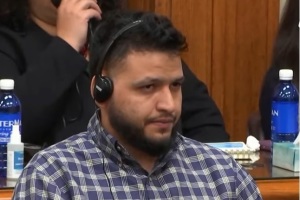Pro-Choice as Rhetoric
Walking and Talking
The smartest thing "abortion rights" advocates ever did was to coin the phrase "pro-choice." That shifted our attention towards the act of choosing and away from what was being chosen—the dismemberment of a human being in utero.
Eventually, however, at some point, "choice" has to go from mere rhetoric to an actual deed. Somebody has to actually perform an abortion if "freedom of choice" is to become a reality, as one medical student learned recently.
The November 23rd issue of the Washington Post Magazine told the story of a medical student named Lesley Wojick. She plans to specialize in obstetrics and gynecology and is unapologetically "pro-choice." She even helped organize a "day-long abortion seminar" at her medical school.
At the seminar, a medical director for Planned Parenthood of Maryland asked the attendees, "How pro-choice are you?" She asked them what their families and neighbors would think of their performing abortions.
Wojick was determined to "walk the talk," to make her "actions to be consistent with [her] words." She thought that if "pro-choice" doctors like her didn't do this, "the right to abortion might be rendered meaningless."
Wojick then attempted to "walk the walk." But not for long. During her obstetrics rotation, she realized that "vacuuming out a uterus and counting the parts of the fetus" wasn't for her. "Somebody else . . . would become an abortion provider. But it wouldn't be her."
It's not surprising. Once you get past the rhetoric of choice, what's left is a bloody and, for most people, disreputable business. As Wojick discovered, even people who insist that it's a right want little to do with the actual practice or the practitioners.
Someone else who understands what abortions really mean is Stojan Adasevic, a Serbian doctor who performed 48,000 abortions in 26 years. Studying medicine in communist Yugoslavia, he was taught that abortion was simply removing a piece of tissue.
Then he began to have nightmares about a field filled with children playing and laughing. When they saw him, they ran away in fear. In the dream, a man in a black and white habit explained to Adasevic that these were the children he had aborted. The man in the habit was St. Thomas Aquinas.
Adasevic insists that he had never heard of Aquinas. In any case, he knew what he had to do. He stopped performing abortions. What he calls his "conversion" came at a cost—the then-communist government "cut his salary in half, fired his daughter from her job, and did not allow his son to enter the university."
Today, Adasevic is a leader of the pro-life movement in Serbia and persuaded authorities to air the pro-life classic, The Silent Scream, on television. Not surprisingly, he has returned to the "Orthodox faith of his childhood."
These stories are reminders that rhetoric can only obscure the truth for so long. Then those on both sides of the abortion debate will have to decide how to "walk the talk."




























